Mountain


- Short Ver.
- Long Ver.
Tama’s Mountain
In the Tama area, rich in nature, there are several mountains that are the objects for mountain worship. The typical examples are Mitake-san Mountain in Ome City and Takao-san Mountain in Hachioji City. Mitake-san Mountain, which is easily accessible from central Tokyo and is visited by more than 400,000 tourists annually, is famous for the Musashi-Mitake-Jinja Shrine near the summit and Shukubo (pilgrim’s lodging) run by the priest of the shrine. You can catch a glimpse of the faith that has become more established in this area.
The other is Takao-san Mountain which was certified as a part of Japan’s cultural heritage in 2020 and has taken root as a place of worship connected with the Tengu legend (the legend of the long-nosed goblin the Japanese people call Tengu). At the Takao-san Yakuo-in Temple on the mountainside, pairs of two Tengu statues, a big Tengu and a small Tengu, are placed here and there, and they are worshiped as the Zuijin (shrine guards) who protect the principal image of the Takao-san Yakuo-in Temple.
Recommended information

Musashi Mitake-Jinja Shrine
- Ome City
- The culture of the Tama area
Musashi Mitake-Jinja Shrine is located on the summit of Mitake-san Mountain. It is said that it was built during the reign of Emperor Sujin. When shrines and temples became popular during the Edo period, the faith of Mitake-Jinja Shrine spread throughout the Kanto region. The wolf that was the messenger of Mitake Okami (Mitake God) was derived from the legend that when Yamato Takeru-no-mikoto lost his way in this area a long time ago, he was led by the wolf and escaped his predicament.
Currently the shrine also prays for dogs, and so it is a popular shrine visited by many worshipers with their dogs. There is also the treasure repository in the precinct, which contains two national treasures including “Akaito-odoshi-yoroi armor” (along with four other important cultural properties) and is said to have dedicated by the military commander Hatakeyama Shigetada according to the history of the Edo Period. The “Murasaki-susogo-Kacchu armor” which is an important cultural property, is the armor that Yamato Takeru-no-mikoto is said to have dedicated and then written an order to the district “to store the armor” which was read as “Musashi”. This is the origin of the place name “Musashi”.
176 Mitakesan, Ome City, Tokyo 198-0175
TEL. 0428-78-8500
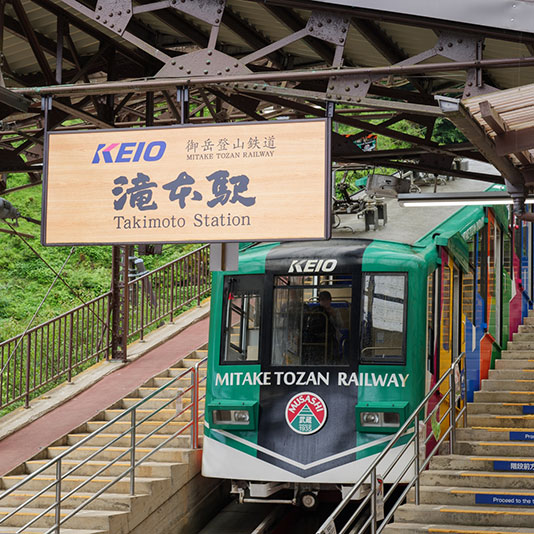
Mitake Tozan Railway
- Ome City
The Mitake-san Cable Car, which connects the foot of Mitake-san Mountain to its summit, was founded in 1927. It is an indispensable means of transportation for people who live on Mitake-san Mountain, such as Shukubo (pilgrim’s lodging) and shrines near the summit, as well as those who visit for sightseeing and mountain hiking. Riders are thrilled by the steep slope with an average grade of 22 degrees and a maximum of 25 degrees, while looking at the scenery of Mikake-san Mountain. They can arrive at the summit in no time at all as it takes only 6 minutes from Takimoto Station at the foot of the mountain to Mitake-san Station at an altitude of 831m. In the shops at Mitake-san Station you can find many unique souvenirs such as mountaineering equipment and local crafts.
Address: 2-483 Mitake, Ome City, Tokyo 198-0174
TEL. 0428-78-8121
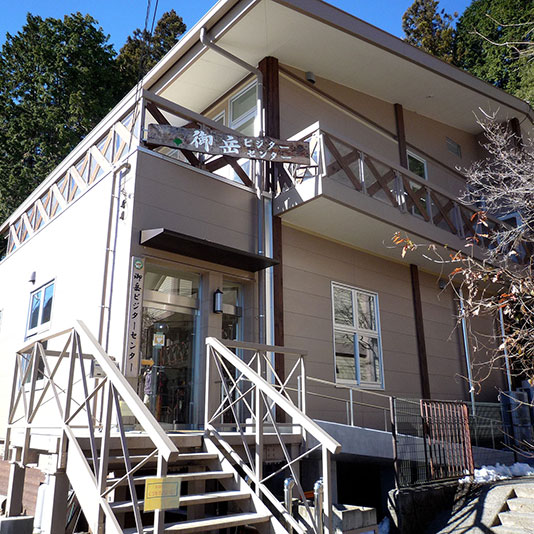
Mitake Visitor Center
- Ome City
The Mitake Visitor Center is about a 10-minutes walk from Mitake-san Station on the Mitake Cable Car. This facility introduces the nature, animals and plants of Mitake-san Mountain to those visiting. A resident interpreter guides you to recommended mountain hiking routes and highlights for each season, information on what is flowering, and points out where cute flying squirrels live. In the Visitor Center, items such as stuffed animals and plants are displayed and activities where you can enjoy crafting experiences using nuts are also provided in the building. The latest information on Mitake-san Mountain is also posted on our website and social media. This is the facility you definitely want to stop by to enjoy Mitake-san Mountain.
38-5 Mitake-san, Ome City, Tokyo 198-0175
TEL. 0428-78-9363

Higashi-baba
- Ome City
Higashi-baba, located on the approach to Musashi-Mitake Jinja Shrine, built in 1886 is a Shukubo (pilgrim’s lodging). It features a thatched roof that conveys the appearance of the Edo period as it was. It is a historic building with tatami rooms decorated in the Shoin-zukuri style, an inner temple for religious ceremonies, a restroom and a private study which were used in Edo peiod. It is registered as a cultural property of the residence “Babake-oshi-Jutaku” designated by the Tokyo Metropolitan Government. Only one group per day can stay there and it can be used as a lunch or teahouse.
54 Mitake-san, Ome City, Tokyo 198-0175
TEL. 0428-78-8446

Takao-san Yakuo-in Temple
- Hachioji City
- Culture of the Tama area
“Takao-san Yakuo-in Temple” is located on the mountainside of Takao-san Mountain at an altitude of 599m. It was opened in 744, about 1270 years ago, by the high priest Gyogi Bosatsu, who received the edict of Emperor Shoumu. It is now known as the head temple of Shingon-shu Chizan-ha (a form of Buddhism in Japan). The principal image of worship is “Izuna-daigongen (a syncretistic fusion of Shintoism and Buddhism)”. Its feature is an incarnation of Fudomyo-o, which means a guardian deity that does not move, and is characterized by the combination of five gods and Buddha. The legend of the Tengu (long-nosed goblin) has been told on Takao-san Mountain for a long time, and it is said that the Tengu is the guardian of “Izuna-daigongen” and plays a role in bringing good luck and amulets. There are many statues of Tengu and statues with Tengu motifs in the surrounding precincts, so please look for them.
2177 Takao-machi, Hachioji City, Tokyo 193-8686
TEL. 042-661-1115
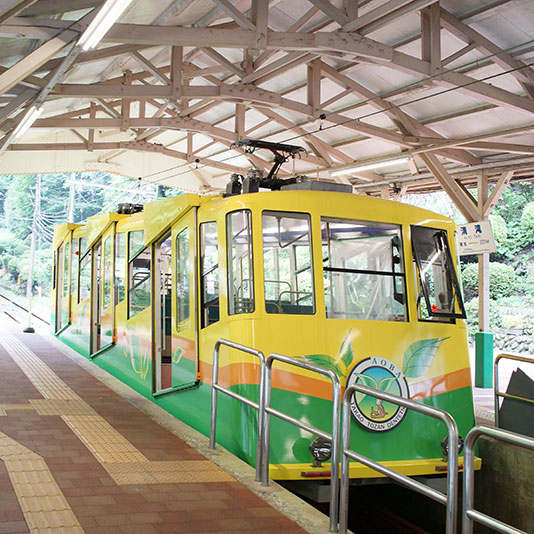
Takao-san Mountain Railway
- Hachioji City
The Takao-san Mountain Railway Cable Car has a long history as it was first opened in 1927. During the war, it was temporarily suspended, but resumed operations in 1949. Since then, it has been popular as a means of transportation for visitors to Takao-san Mountain. It takes about 6 minutes to get to 271m above sea level from Kiyotaki Station at the foot of Takao-san Mountain to Takao-san Mountain Station on the mountain’s lower slopes. The highest gradient reaches 31 degrees, making it the steepest cable car in Japan, and the ride lasts for 18 minutes. From the window of the cable car, you can enjoy seeing not only the nature of Takao-san Mountain, but also the skyscrapers of Shinjuku area and the Tokyo Sky Tree on a clear day. We also recommend the lift if you want to enjoy the view of Takao-san Mountain while feeling the breeze. This way you can access the mountaintop while enjoying the view of the changing seasons. Especially in summer, the wind feels good and it is perfect for keeping cool.
2205 Takao-machi, Hachioji City, Tokyo 193-8511
TEL. 042-661-4151
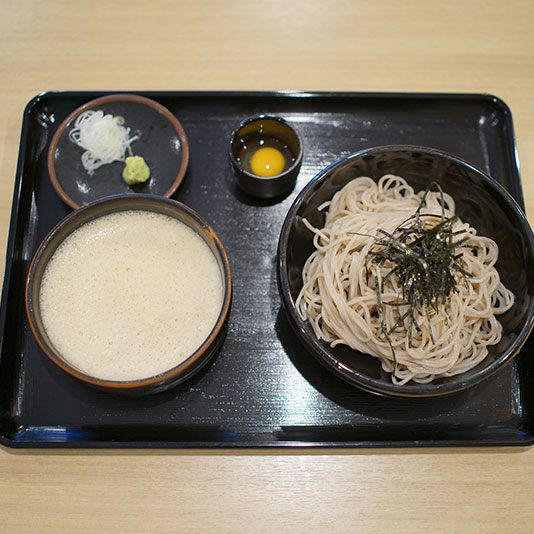
Momijiya-honten (Restaurant)
- Hachioji City
- Gourmet
“Tororo Soba (Japanese noodles with grated yam)”, one of Takao-san Mountain’s specialty gourmet dishes is used to provide nutritious natural yam with soba to heal the tiredness of worshipers visiting Yakuo-in. It is said to have been popular here first and then spread its popularity outward. Therefore, there are many soba restaurants from Takao-san Station along the Keio Line to the entrance of the mountain trail. The most popular restaurant of these is Momijiya-honten, which was founded in 1897. Their popular menu “Tororo Soba (with quail eggs)” is characterized by its pure white and fluffy tororo (grated yam). When grating the yam only the central part of the yam with is used. When eating tororo with moderately chewy soba, the rich taste spreads in your mouth, and it is recommended that the quail eggs be mixed with the tororo.
2208 Takao-machi, Hachioji City, Tokyo 193-0844
TEL. 042-661-2012
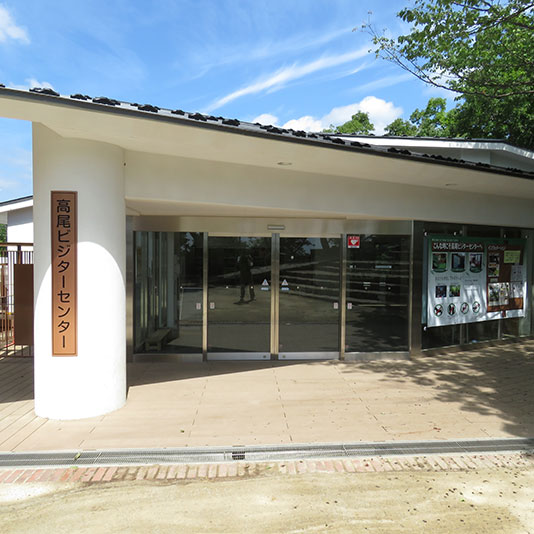
Takao Visitor Center
- Hachioji City
The Takao Visitor Center on the summit of Takao-san Mountain is a facility that provides information on local nature such as animals and plants that inhabit the Takao-san Mountain area, and an introduction of the historical culture and information on mountain trails. Opened in 1969, it is also the first visitor center in Japan where an interpreter permanently resided. In this center, where you can enjoy learning the history and nature of Takao-san Mountain there are panels of information on the mountain trails along with stuffed animal and plants on display. At the information counter you can ask and resolve any kind of question regarding Takao-san Mountain. You can also enjoy annual events which can provide nature experience and outdoor programs, and you can learn about nature while walking in the forest of Takao-san Mountain with the interpreter.
2176 Takao-machi, Hachioji City, Tokyo 193-0844
TEL. 042-664-7872

